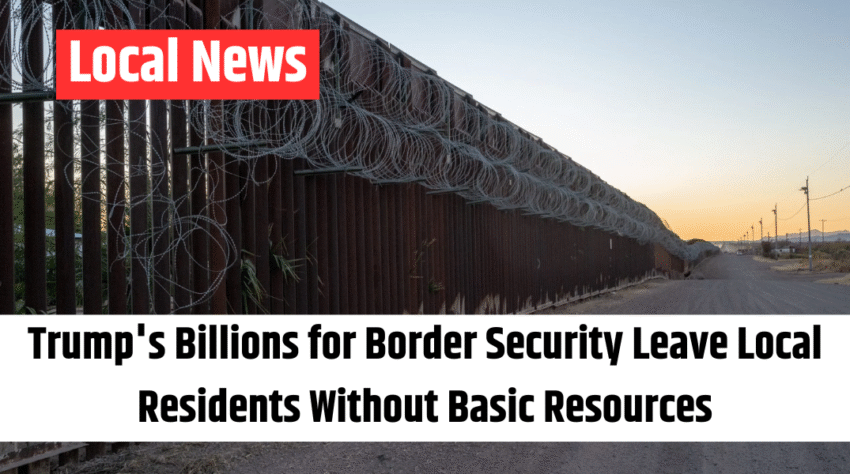Despite billions of federal and state dollars funneled into border security along the U.S.-Mexico line, communities in Texas and Arizona remain among the poorest in the country, struggling to access basic necessities like clean water and health care.
Since declaring a border emergency on his first day in office, former President Donald Trump ramped up funding for wall construction and immigration enforcement, pushing for as much as $175 billion in additional spending. Grants continue to pour into border towns like Del Rio, Texas, and Douglas, Arizona, funding police patrols, National Guard deployments, and wall construction.
But many local residents say their most urgent needs are being ignored.
Residents Without Water
In Del Rio, Cierra Flores’ family hauls water from a neighbor’s well because their own runs dry during summer droughts. Their situation is common in the colonia of Escondido Estates, where many homes have lacked running water for decades.
Around 2,000 people in Val Verde County, Texas—over 4% of the population—still don’t have reliable access to water. Some shower at gyms or do dishes with bottled water. Statewide, around 30,000 people along the border live without safe drinking water.
Sandra Fuentes, a community organizer, says decades of fighting for water infrastructure have been stymied by politics and underfunding. “What else is there to do?” she asked. “It’s going to be an uphill battle, but we are going to keep on battling.”
Hospitals Out of Reach
In Douglas, Arizona, 8-year-old Jacob Nelson had to be airlifted to Tucson when dust-induced breathing problems worsened. The city lost its hospital in 2015 due to financial issues and Medicare violations. Now, the nearest full-service hospitals are up to two hours away.
Also Read – West Virginia Ranked Among Worst States for Older Workers in New Study
More than 205,000 residents in southern Arizona are in a similar position, living far from emergency care. Douglas’ 15,000 residents rely on a stand-alone ER that handles only basic conditions.
Investments in Security, Not Community Needs
While Texas has allocated over $1 billion in grants and loans since the 1990s to address water issues in underserved communities, the need far exceeds available funding. In 2023 alone, the state had $200 million in water grant requests—but just $100 million to award.
Meanwhile, Operation Lone Star, Texas’ border security initiative, has funneled over $10 million to Val Verde County and Del Rio. A five-mile stretch of state-funded border wall in the area cost at least $162 million. Texas’ proposed budget includes another $6.5 billion for border security.
Residents like Fuentes and Karen Gonzalez say it’s infuriating to watch security investments grow while basic infrastructure lags. “Focus on what our actual border community needs are,” Gonzalez said. “And for us, I feel like it’s not border security.”
State officials acknowledge the urgency. Governor Greg Abbott has called for a $10 billion, 10-year investment in water infrastructure. The Texas House proposes $2.5 billion in its base budget for such projects.
Still, delays are common. Even when grants are approved, construction setbacks—like hitting unexpected bedrock—can drag projects out for years, making it harder to secure future funding.
As long as border security dominates the political conversation, many border residents feel their everyday challenges will continue to be overlooked.
